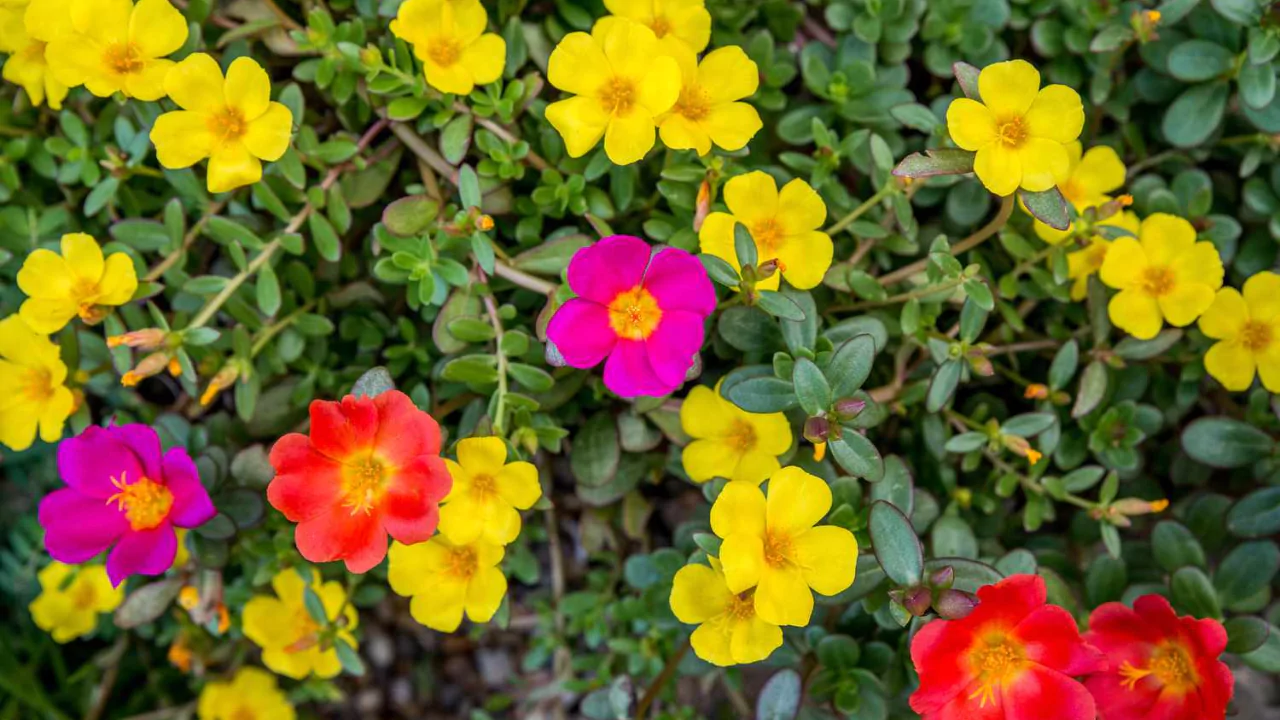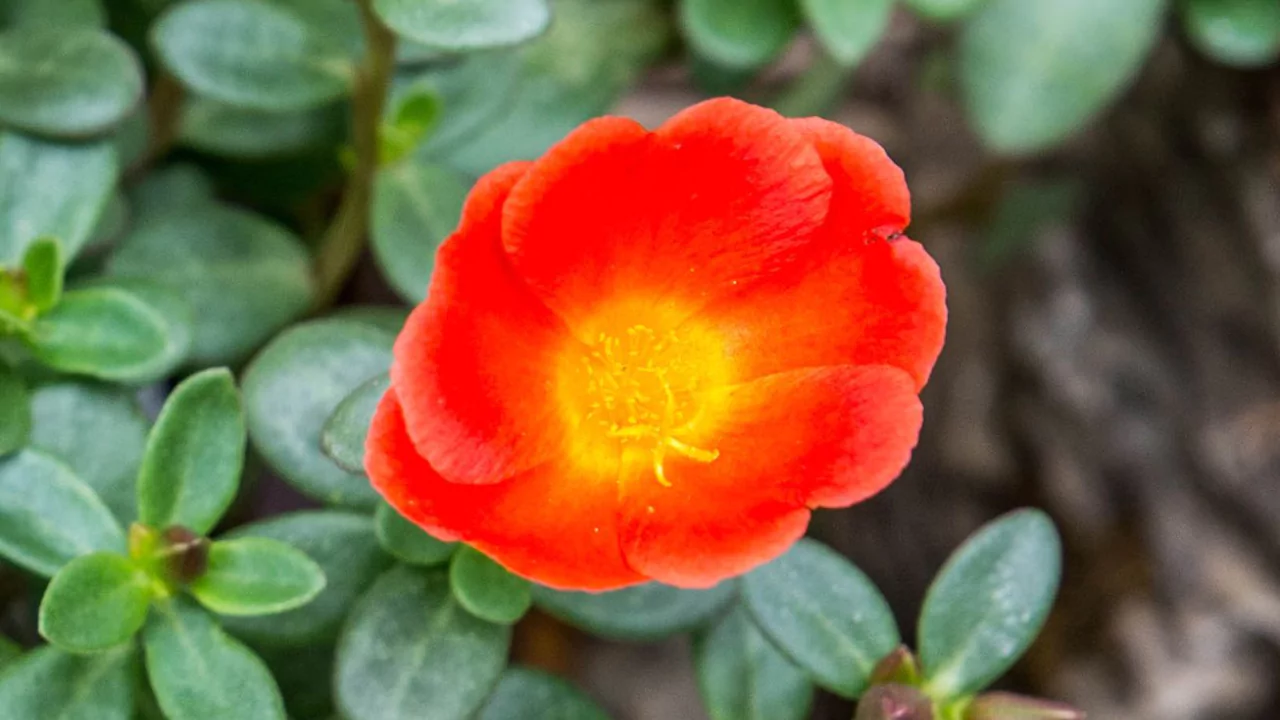
Most gardeners have a corner in their garden where almost nothing flourishes. You may know this place – devoid of moisture, baking temperatures, and soil like granulated sugar. A member of the succulent family, moss rose can help mitigate this gardening nuisance. These resilient plants will endure the harshest conditions.
Portulacas were first discovered in Argentina by Dr. John Gillies who encountered them at the base of the Andes Mountains, growing in sandy, barren soil. He was captivated by the plants’ sprawling form and abundant flowers. Most likely, the conditions surrounding his home were not dry. It is, however, curious that he specialized in such a unique plant, having studied English botanist Joseph Banks.
Moss roses are often incorporated in rock gardens and xeriscapes. These regions, characterized by drought resistant landscaping, make use of plants such as moss roses, which are able to endure severe water shortages thanks to their thick, padded leaves. These plants are not limited to deserts, as they can thrive in USDA plant hardiness zones 2 through 11. Still, they do not perform well in rainy climates, which prevent blooming on cloudy days.
Moss roses are considered annual flowers, but with minimal care, they can self-sow and return year after year. The flowers bloom in a profusion of colors ranging from yellow to pink to purple. The original varieties opened only in the morning and closed by midday. Most modern cultivars have “double” rose-like petals and stay open all day. Moss roses are compact plants with a height of less than six inches and a twelve inch spread.
Growing Moss Rose
Most gardeners obtain moss rose transplants from nurseries, but the plants can also be started from seeds. Sow seeds indoors four weeks before the last frost date or direct sow when the weather is warm. Seeds should be covered with a thin layer of soil and be kept moisture until they germinate. Soil temperatures between 75-85°F are ideal for germination. Moss roses have fragile roots, so careful handling is necessary during transplanting.
Though moss roses endure dry, barren soil, they will benefit from gentle nurturing. During dry spells, water them weekly, and enrich the soil with compost before planting. Moss roses yield an abundant amount of black seeds which may inhibit flowering. If this occurs, shear the plants to encourage a new wave of blooms.

Moss Rose Pests and Diseases
As flowers that thrive on neglect, moss roses are very low maintenance plants. Most diseases actually stem from too much care. For example, root rot is worsened by overly wet soils. Providing dry, well-drained soils for moss roses resolves this problem.
At times, moss roses are infected with white rust, but the infection is rarely severe. For maintaining plant health, water restrictions using drip irrigation rather than overhead sprinklers minimizes water to leaves. Water early in the morning to allow swift drying of leaves. Remove infected plants and do not compost them.
Moss roses are occasionally affected by aphids, but the infestations, if any, are not usually serious. Aphids, while tiny and difficult to see, do exude honeydew, along with a black sooty fungus that grows on the honeydew.
Aphids damage moss roses by extracting sap through their piercing mouth parts. Thankfully for moss roses, aphids leave them after a few weeks and are preyed on by a number of beneficial insects. Generally, no treatment is needed, but a strong water spray mist may help in their removal.
Varieties of Moss Rose
‘Sundance’ remain a very popular cultivar as they have blooms that are double flowered and bloom continuously during the daytime.
Consider trying ‘Calypso,’ which produces flowers of different colors.
When not gardening or writing about canning food, Julie Christensen spends her time writing. She has penned hundreds of articles for the Gardening Channel, Garden Guides and San Francisco Gate, and has authored several e-books.